Neck Whiplash
Updated:
(Also known as Whiplash, Whiplash Syndrome, Acceleration / Deceleration Injury, Neck Sprain)
What is neck whiplash?
Neck whiplash is the term given to an acceleration / deceleration injury of the neck that typically occurs during motor vehicle accidents or contact sports. This may cause damage to numerous structures within the neck resulting in a variety of symptoms such as pain and stiffness in the neck.
The spine (neck) comprises of many bones known as vertebrae. Each vertebra connects with the vertebra above and below via two types of joints: the facet joints on either side of the spine and the disc centrally (figure 1). In addition, the spine has muscles situated at the front, back and sides of the neck supporting these joints. During a typical acceleration / deceleration injury of the neck involving a forward / backward movement, stretching and compressive forces are placed on the joints, muscles, ligaments and nerves primarily at the front and back of the neck. This may cause widespread damage to these structures if the forces are beyond what the tissues can withstand. When this occurs the condition is known as neck whiplash.
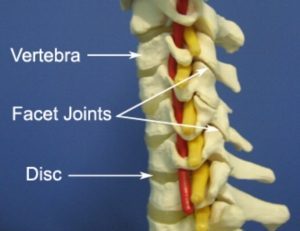
Causes of neck whiplash
Whiplash injuries most commonly occur in motor vehicle accidents whereby the neck is thrown forcefully forwards and then backwards. This condition is also frequently seen in contact sports, whereby the usual mechanism of injury is a forceful collision with another player resulting in a jolting force to the head and neck.
Whilst a forward, backward movement of the neck is the typical mechanism of injury in patients with this condition, it is also common for whiplash injuries to involve a sideways or rotation force either in isolation or in addition to the typical forward / backward movement of the head and neck. When this occurs, tissue damage and symptoms are typically distributed more unevenly across the neck, with symptoms usually being worse on one side of the body.
Signs and symptoms of neck whiplash
Patients with this condition usually experience a sudden onset of neck pain during the causative activity. However, occasionally, in less severe cases, patients may experience little or no pain at the time of injury. In these instances, symptoms typically increase over the following 2 to 3 days and may be most prominent at night or first thing in the morning.
Patients with neck whiplash usually experience pain in the front, back or sides of the neck that sometimes may be accompanied by pain radiating down one or both arms (sometimes as far as the hand and fingers) or into the shoulder blade region, or in some cases, headaches.
Pain may be sharp or dull, with symptom intensity varying between mild and severe usually based on the forces involved at the time of injury. Patients with this condition also commonly experience stiffness or restricted movement in their neck which can range from mild to severe. Muscle spasm, pins and needles, numbness, a burning sensation or weakness may also be present. Occasionally the neck may be noticeably out of alignment, with pain preventing the patient from straightening the neck. Some patients may also feel that their head is too heavy and can experience difficulty lifting their head off a pillow.
Symptoms associated with whiplash are often exacerbated by sustained postures such as reading, driving, sitting at a computer, using a mobile phone or watching television. Symptoms may also increase during activities using the arms in front of the body (such as cooking, ironing, vacuuming etc.), prolonged sitting (especially if slouched), lifting and with certain neck movements involving rotation, side bending, bending forwards or backwards. Sneezing may also aggravate symptoms. Patients with neck whiplash often experience pain and stiffness that is worse first thing in the morning.
Diagnosis of neck whiplash
A thorough subjective and objective examination from a physiotherapist is usually sufficient to diagnose neck whiplash. Investigations such as an X-ray, MRI or CT scan are usually required to rule out serious injury.
Prognosis for neck whiplash
Most patients with mild to moderate cases of neck whiplash heal quickly and have a full recovery with appropriate physiotherapy treatment. In these instances, recovery may take weeks to months. In severe cases, recovery may be significantly longer. Patients with severe neck whiplash may also have an increased likelihood of developing degenerative changes to their joints (neck arthritis) resulting in potential long term problems with restricted movement and pain.
Treatment for neck whiplash

Members Only ContentBecome a PhysioAdvisor Member to gain full access to this exclusive content. For more details see Become a Member. Already a member? Login Now
Physiotherapy for neck whiplash

Members Only ContentBecome a PhysioAdvisor Member to gain full access to this exclusive content. For more details see Become a Member. Already a member? Login Now
Other intervention for neck whiplash
Despite appropriate physiotherapy management, a small percentage of patients with neck whiplash fail to improve and may require other intervention. This may include pharmaceutical intervention, corticosteroid injection, investigations such as an X-ray, CT scan or MRI, or referral to appropriate medical authorities who can advise on any intervention that may be appropriate to improve the condition.
Exercises for neck whiplash
The following exercises are commonly prescribed to patients with neck whiplash. You should discuss the suitability of these exercises with your physiotherapist prior to beginning them. Generally, they should be performed provided they do not cause or increase symptoms.
Your physiotherapist can advise when it is appropriate to begin the initial exercises and eventually progress to the intermediate and advanced exercises. As a general rule, addition of exercises or progression to more advanced exercises should only take place provided there is no increase in symptoms.
Initial Exercises
The following initial exercises should generally be performed 3 – 5 times daily and only provided they do not cause or increase symptoms.
Chin Tucks
Begin sitting or standing tall with your back and neck straight. Your shoulders should be back slightly (figure 6). Tuck your chin in as far as you can go without pain and provided you feel no more than a mild to moderate stretch. Keep your eyes and nose facing forwards. Hold for 2 seconds and repeat 10 times provided the exercise does not cause or increase symptoms. Repeat 3 – 5 times daily.

Shoulder Blade Squeezes
Begin sitting or standing tall with your back and neck straight (figure 7). Squeeze your shoulder blades together as far as you can go without pain and provided you feel no more than a mild to moderate stretch. Hold for 5 seconds and repeat 10 times provided the exercise does not cause or increase symptoms. Repeat 3 – 5 times daily.

Intermediate Exercises

Members Only ContentBecome a PhysioAdvisor Member to gain full access to this exclusive content. For more details see Become a Member. Already a member? Login Now
Advanced Exercises

Members Only ContentBecome a PhysioAdvisor Member to gain full access to this exclusive content. For more details see Become a Member. Already a member? Login Now
Rehabilitation Protocol for neck whiplash

Members Only ContentBecome a PhysioAdvisor Member to gain full access to this exclusive content. For more details see Become a Member. Already a member? Login Now
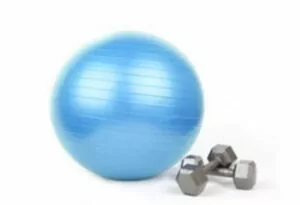 Physiotherapy products for neck whiplash
Physiotherapy products for neck whiplash
Some of the most commonly recommended products by physiotherapists to hasten healing and speed recovery in patients with this condition include:
-
 Wheat Bags
Wheat Bags -
 OPPO – Posture Aid / Clavicle Brace (OPP2075)
OPPO – Posture Aid / Clavicle Brace (OPP2075) -
 Premium Strapping Tape 38mm (Victor)
Premium Strapping Tape 38mm (Victor) -
 AllCare Pro-TENS Machine
AllCare Pro-TENS Machine -
 AllCare Tubing
AllCare Tubing -
 Fixomull Stretch 5cm x 10m
Fixomull Stretch 5cm x 10m -
 Therapack Hotpacks – Neck Warmer
Therapack Hotpacks – Neck Warmer -
 AllCare Instant Cold Pack (15 x 25cm)
AllCare Instant Cold Pack (15 x 25cm) -
 AllCare Foam Roller Round
AllCare Foam Roller Round -
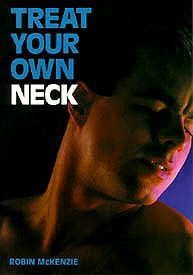 McKenzie Treat Your Own Neck Book
McKenzie Treat Your Own Neck Book -
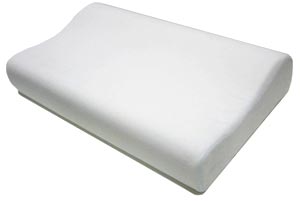 Dentons Impressions Classic Memory Foam Therapeutic Pillow
Dentons Impressions Classic Memory Foam Therapeutic Pillow
To purchase physiotherapy products for neck whiplash click on one of the above links or visit the PhysioAdvisor Shop.
 Find a Physio
Find a Physio
Find a physiotherapist in your local area who can treat this condition.
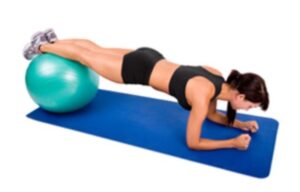 More Exercises
More Exercises
- Neck Stretches.
- Upper Back Stretches .
- Arm Stretches.
- Leg Stretches.
- Beginner Pilates Exercises.
- Cardiovascular Exercise.
- Core Stability Exercises.
- Arm Strengthening Exercises.
- Leg Strengthening Exercises.
- Upper Body Gym Exercises.
- Lower Body Gym Exercises.
 Recommended Reading
Recommended Reading
- Correct Posture.
- Postural Taping.
- Mobile Phone Ergonomics.
- Ergonomic Computer Setup.
- Correct Lifting.
- Investigations.
- Ice or Heat.
- R.I.C.E. Regime.
- Choosing a School Bag.
- Understanding Pain
- Neck Diagnosis Guide.
Become a PhysioAdvisor Member

Link to this Page
If you would like to link to this article on your website, simply copy the code below and add it to your page:
<a href="https://physioadvisor.com.au/injuries/neck-head/neck-whiplash”>Neck Whiplash – PhysioAdvisor.com</a><br/>PhysioAdvisor offers detailed physiotherapy information on neck whiplash including: symptoms, causes, diagnosis, treatment, exercises, rehabilitation protocol, physiotherapy products and more...
Return to the top of Neck Whiplash.

